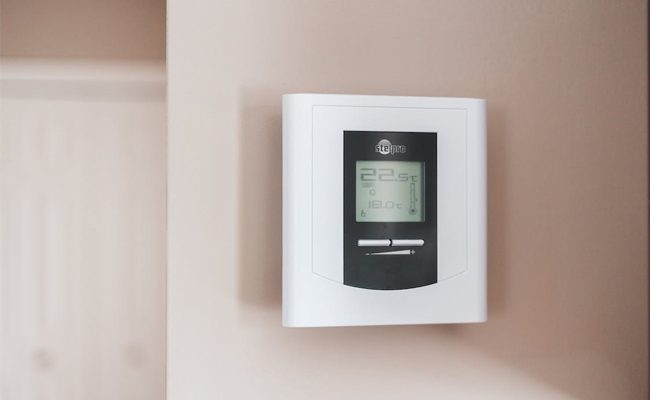
A thermostat is an essential part of any heating and cooling system. It controls the temperature in your home, which affects your comfort level and energy bills.
AC thermostat installation is a relatively simple process, but it’s important to do it correctly to avoid common mistakes.
We’ve consulted with expert HVAC service providers, the most common AC thermostat installation mistakes and how to avoid them. Here is what they had to say:
Incorrect Wiring
One of the most common mistakes homeowners make when self-installing a thermostat is wiring it incorrectly. The thermostat has several wires that need to be connected to the HVAC system properly.
If the wires are not connected correctly, the thermostat won’t work, and it can even cause damage to your HVAC system. Make sure you read the manufacturer’s instructions carefully and follow the wiring diagram provided to the letter.
Poor Placement
The location of the thermostat is crucial because it can affect the temperature reading and the performance of your HVAC system. If the thermostat is placed in direct sunlight, near a window, or in a drafty area, it will give inaccurate temperature readings, leading to increased energy bills and reduced comfort.
If you locate it near equipment that gives off considerable heat, this can also affect the thermostat sensors. It’s essential to place the thermostat in a central location away from direct sunlight, windows, heat sources, and drafts.
Unlevel Thermostats
Many people forget to level the thermostat during installation. If the thermostat is not level, it can cause the mercury switch to malfunction, which affects the temperature reading. A level thermostat ensures accurate temperature readings and proper performance of your HVAC system. Be sure to use the proper leveling tools to ensure that the thermostat is properly aligned rather than relying only on a visual assessment that may not be accurate.
Incorrect Programming
One of the most noteworthy benefits of a programmable thermostat is that it allows you to set different temperatures for different times of the day. However, many people make the mistake of not programming the thermostat correctly, which can lead to energy waste and an uncomfortable temperature in your home.
You should set the thermostat to your desired temperature and program it according to your schedule, so it adjusts the temperature automatically to suit your lifestyle.
Outdated Thermostat
If you’ve upgraded your HVAC system, you should also upgrade your thermostat. An old thermostat may not be compatible with a more modern system or may not possess the capabilities intended for your newer system. Using a mismatched thermostat will lead to reduced HVAC performance and increase your utility bills.
You’ll have much better functionality and efficiency if you update your thermostat along with your system, especially if you opt for a programmable or smart thermostat that allows you to program a set schedule rather than making frequent manual adjustments.
Electrical Hazards
Before installing a new thermostat, it’s imperative that you turn off the power to your HVAC system. Failure to ensure that the power has been disconnected can result in an electric shock for you or damage to your HVAC system.
You should turn off the power to the HVAC system at the circuit breaker or fuse box and make sure it is marked or communicated to your family that you are working on the system so that it is not inadvertently turned back on by another party.
Wrong Thermostat
There are several types of thermostats available in the market, including non-programmable, programmable, and smart thermostats. Choosing the wrong type of thermostat can lead to discomfort, energy waste, and reduced performance of your HVAC system.
Non-programmable thermostats are simple to use but don’t offer any flexibility, while programmable thermostats allow you to set different temperatures for different times of the day. Smart thermostats are the most advanced, offering features like remote control and learning capabilities.
Testing Failures
Once you have installed your thermostat, it is important to test it to see if it is working correctly. You can test the thermostat by setting it to a specific temperature and waiting for a few minutes to see if the HVAC system responds accordingly. You can also use a thermometer to verify the temperature reading on the thermostat.
Self-Installation
Though we’ve covered the mistakes you can make when installing a thermostat yourself, the biggest mistake may be to do it at all. While you can install a thermostat without professional assistance, many things can go wrong, such as any of the issues above or even unexpected problems with your wiring.
So, before you march down to the home improvement store and pick out a new thermostat, first take the time to determine if you have the tools and the knowledge to accomplish the installation without an issue. Review your warranty information to determine if you are voiding any warranties on the system or the thermostat itself.
If you are unsure about putting in your own thermostat, you should contact a professional to do the job for you. Installing a thermostat yourself can save you money, but it can also lead to mistakes that can cause damage to your HVAC system and, in some cases, you may void your warranty by doing so.
Leave a Reply